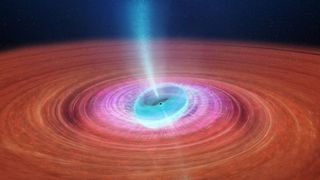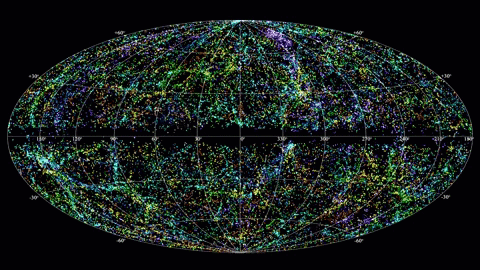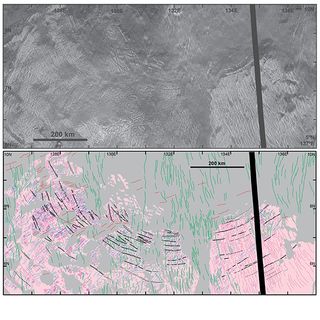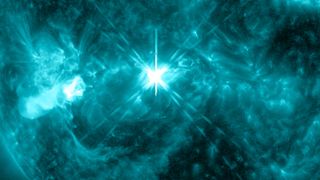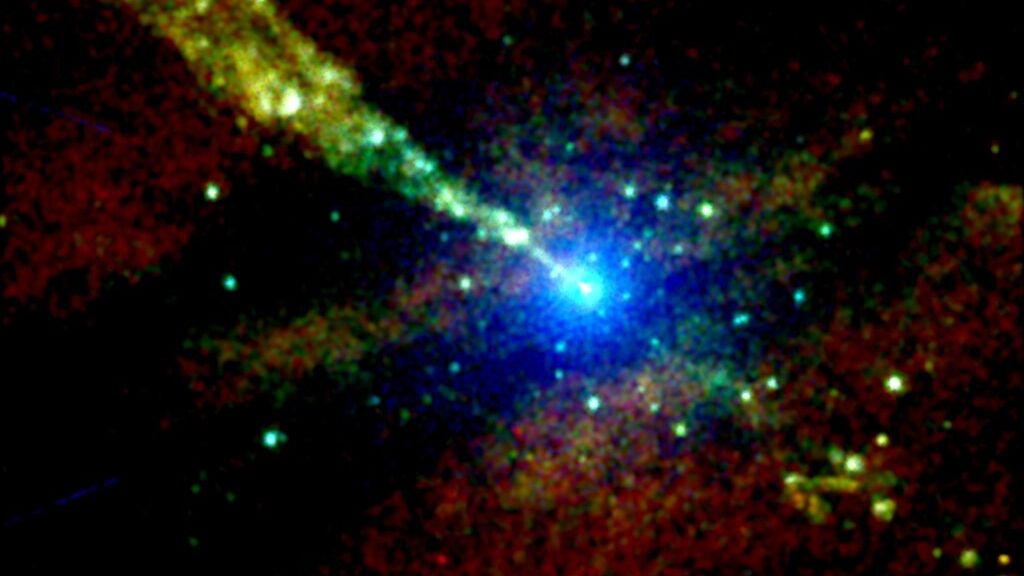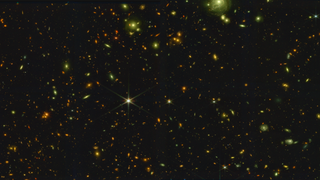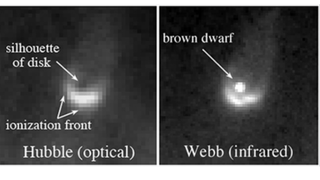Black holes exert a tremendous influence on their surroundings, meaning that when they spin, they literally drag the very fabric of space and time around with them. That means nothing can sit still around a rotating black hole, including the “plates” that these cosmic titans feed from. Those flattened clouds of gas and dust surrounding supermassive black holes are known as accretion disks. Around some supermassive black holes, the churning of these disks is one of the most efficient ways of converting energy in the known universe — changing gravitational…
Read MoreTag: The Universe
Where do fast radio bursts come from? Astronomers tie mysterious eruptions to massive galaxies
Every day, invisible to the human eye, thousands of enigmatic flashes of cosmic energy known as fast radio bursts (FRBs) erupt across the sky, releasing as much energy in milliseconds as the sun does in a day. Thanks to their fleeting nature, scientists have often had to rely on luck just to observe FRBs, let alone pinpoint where they come from or what causes them to behave the way they do. Now, astronomers led by Kritti Sharma at the California Institute of Technology posit that such energy-packed light flashes tend…
Read More4 years after the giant Arecibo Observatory collapsed, we finally know what happened
What does the discovery of a binary pulsar in 1974, the discovery of the first exoplanets, and the most powerful message humans have ever sent out into space all have in common? They all happened at the Arecibo Observatory in Puerto Rico. With a spherical reflector dish that was 305 meters (roughly 1000 feet) in diameter, Arecibo held the title of world’s largest radio telescope for over half a century — from its construction in 1963 until 2016. To the dismay of astronomers around the world, in 2020, Arecibo’s reflector…
Read MoreVenus’ ‘missing’ giant impact craters may be hiding in plain sight
Impact features on Venus may have been staring us in the face all along That’s the message from a team of planetary scientists, who have explained Venus‘ apparent dearth of large craters by discovering that impacts could have produced the mysterious “tesserae” formations on the Venusian surface. Tesserae are large — sometimes continent-size — expanses of terrain that have been deformed and covered with wrinkle ridges, which make the landforms look like sheets of corrugated iron. They are formed by lava welling up to the surface, where it cools and…
Read MoreSun erupts with powerful X2.3 solar flare, triggers radio blackouts (video)
The sun erupted with an X2.3-class solar flare this morning, triggering radio blackouts The X-class solar flare was released from a sunspot region AR 3883 at 8:40 a.m. ET (1340 UTC) on Wednesday morning (Nov. 6). Sunspots are darker, cooler locations on the sun that measure the size of planets and denote where the sun’s strong magnetic field roils up to its surface. It was the sunspot region’s strongest flare yet. According to Spaceweather.com, the wait is on for scientists to receive data from the coronagraph on the joint NASA/European Space…
Read MoreSupernova hides in new Hubble Telescope galaxy ‘light show’ image (photo)
A celestial light show illuminates a distant spiral galaxy, where a hidden supernova briefly outshines its stellar neighbors in a new image from the Hubble Space Telescope. The galaxy, called NGC 1672, is a barred spiral galaxy located 49 million light-years from Earth in the constellation Dorado. Billions of stars fueled by hydrogen gas in the swirling arms glow brightly across the galaxy, with newly formed and extremely hot stars emitting powerful radiation that creates a vibrant red light, according to a statement from the European Space Agency (ESA). (Hubble…
Read MoreNASA’s Chandra X-ray telescope sees ‘knots’ blasting from nearby black hole jets
Astronomers have scoured decades-old data from NASA’s Chandra X-ray Observatory, finding bright, lumpy features dotting a jet of energy spit out by a nearby black hole. Puzzlingly, the “knots” clock a faster speed when seen in X-rays than they do in radio wavelengths. scientists said. “The X-ray data traces a unique picture that you can’t see in any other wavelength,” study lead author David Bogensberger, an astrophysicist at the University of Michigan, who led the new study, said in a recent news release. “We’ve shown a new approach to studying…
Read MoreBlack holes that form in ‘reverse Big Bang replays’ could account for dark energy
Scientists have strengthened the potential connection between dark energy and black holes. New research suggests that as more black holes were born in “little Big Bang reverse replays” in the 14.6 billion-year-old cosmos, the strength of dark energy grew to dominance and continues to change to this day. Dark energy is the placeholder name given to the mysterious force driving the acceleration of the universe’s expansion in its current epoch. It is troubling because scientists have no idea what dark energy is, yet it dominates our universe, accounting for around…
Read MoreSmall moon of Uranus may have once had a subsurface liquid water ocean
Over the last few decades, planetary scientists have been steadily adding to the list of moons in our solar system that may harbor interior oceans either currently or at some point in their past. For the most part, these moons (such as Europa or Enceladus) have been gravitationally bound to the gas giants Jupiter or Saturn. Recently, though, planetary scientists have been turning their attention further afield, towards the ice giant Uranus, the coldest planet in the solar system. And now, new research based on images taken by the Voyager…
Read MoreCan ‘failed stars’ have planets? James Webb Space Telescopes offers clues
Using the James Webb Space Telescope, astronomers have discovered that planet-forming disks in the Orion nebula actually surround “failed stars,” or brown dwarfs. This is the first confirmation that planet-forming, flattened clouds of gas and dust called “protoplanetary disks” surround these peculiar cosmic objects. The team discovered this while using the James Webb Space Telescope (JWST) to follow up on observations of protoplanetary disks, or “proplyds,” illuminated by ultraviolet light in the Orion Nebula. Those observations were collected by the Hubble Space Telescope. These findings could help scientists understand how…
Read More